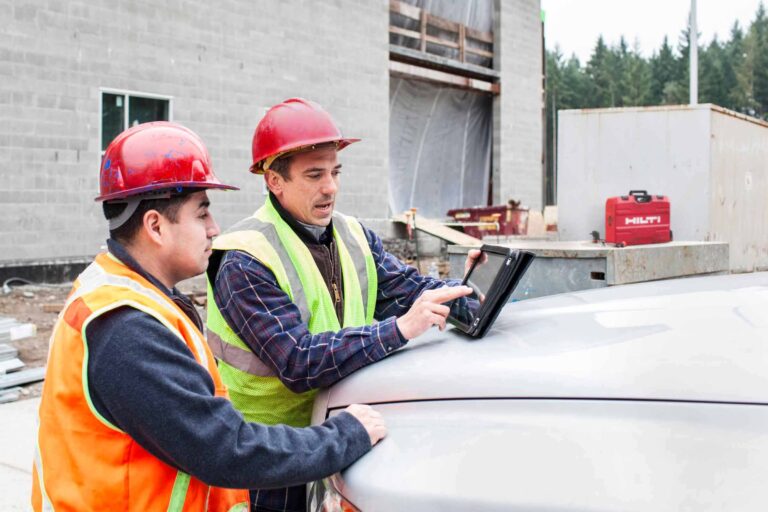
The construction industry has long been associated with manual processes, complex project management, and extensive paperwork. However, with the rise of digital transformation, automation has become a game-changer for construction companies looking to streamline their workflows. Software solutions are increasingly being adopted to enhance efficiency, reduce human error, and improve overall project outcomes. From project planning and scheduling to resource allocation and compliance management, automation is revolutionising the way construction firms operate.
The Evolution of Automation in Construction
Historically, construction workflows were managed through physical documentation, face-to-face meetings, and manual calculations. While this approach worked in the past, it often led to inefficiencies, miscommunication, and costly delays. With the advent of construction management software, companies have been able to integrate various processes into a single digital ecosystem, allowing for better coordination and execution.
Automation in construction is not just about replacing manual work with software—it is about enhancing human decision-making, optimising workflows, and enabling construction teams to work smarter. As artificial intelligence (AI) and machine learning (ML) continue to advance, automation in construction is expected to become even more sophisticated, reducing bottlenecks and improving project predictability.
Project Planning and Scheduling
One of the most critical aspects of any construction project is planning and scheduling. Traditionally, project managers would rely on spreadsheets and whiteboards to create schedules, allocate tasks, and monitor progress. However, this method is prone to errors and inefficiencies, especially for large-scale projects with multiple teams and stakeholders.
Automation in project scheduling allows construction companies to generate optimised timelines based on available resources, weather conditions, and workforce availability. Modern software solutions use predictive analytics to anticipate potential delays and adjust schedules accordingly. By integrating automation, project managers can ensure that tasks are assigned efficiently, reducing downtime and improving overall productivity.
Additionally, automated scheduling software allows real-time tracking of progress, sending alerts and notifications when deadlines approach or when unexpected changes occur. This level of visibility ensures that all stakeholders remain informed and that projects stay on track, reducing the risk of last-minute disruptions.
Document Management and Compliance
Construction projects generate vast amounts of documentation, including contracts, blueprints, safety reports, permits, and compliance records. Managing these documents manually can be time-consuming and error-prone, leading to misplaced files and compliance issues.
With automated document management systems, construction companies can store, organise, and retrieve documents in a centralised digital repository. These systems use version control to ensure that the most up-to-date documents are accessible to the relevant stakeholders. Furthermore, automation can facilitate compliance tracking by flagging missing permits, expired certifications, or regulatory requirements that need attention.
Compliance is a major concern in the construction industry, as failure to meet regulations can result in fines, project shutdowns, or legal complications. Automated compliance tracking software helps companies stay ahead of these challenges by monitoring changes in regulations and ensuring that all necessary documentation is up to date. This not only reduces administrative burden but also enhances safety and legal adherence.
Resource and Inventory Management
Managing resources efficiently is a key factor in keeping construction projects within budget and on schedule. The proper allocation of materials, equipment, and labour is essential to avoid shortages, overstocking, and unnecessary delays. Every project, regardless of its size, requires careful planning and coordination to ensure resources are available when needed, without tying up excess capital in unutilised inventory or equipment.
Automated resource management software is a game-changer for construction firms, allowing them to seamlessly track inventory levels, forecast material needs, and automate procurement processes. With the power of real-time data, project managers can stay ahead of potential shortages by monitoring stock levels continuously. Automated alerts notify managers when materials are running low, so they can place orders in advance, reducing the likelihood of project interruptions due to delayed shipments or unavailable supplies. This real-time visibility into inventory ensures a smoother workflow, keeps the project on track, and helps avoid costly delays caused by material shortages.
Beyond materials, resource management also extends to equipment and machinery. Construction companies often have a range of expensive machinery that needs to be maintained and deployed efficiently across multiple job sites. Resource management software helps track the location, usage, and maintenance schedules of each piece of equipment. This information allows managers to optimise equipment usage, ensuring that high-value assets are being used efficiently and reducing the costs associated with equipment downtime or underutilisation.
Furthermore, workforce management is another area where automation can provide significant benefits. Labour scheduling software ensures that the right number of workers, with the right skillsets, are assigned to each task based on availability, expertise, and project requirements. This precision in workforce allocation prevents issues such as underutilisation, where workers sit idle waiting for tasks, or overstaffing, where too many workers are assigned to a single task, resulting in inefficiency and increased labour costs. By optimising workforce deployment, construction companies can maximise productivity, improve job site safety, and maintain better control over labour costs.
Integrating all these elements—materials, equipment, and labour—into a single automated system provides a holistic approach to resource management, enabling companies to maintain control over project timelines and budgets. These solutions help streamline operations, ensure that resources are always available when needed, and reduce the risks of project delays and cost overruns. The result is a more organised, efficient, and profitable construction operation, where resources are utilised effectively and project goals are met with minimal friction.

Cost Estimation and Budgeting
Accurate cost estimation is crucial in the construction industry, as budgeting errors can lead to financial losses and project overruns. Traditionally, cost estimation involved manual calculations, which were susceptible to human error and unexpected fluctuations in material prices or labour costs.
Automation has significantly improved cost estimation by incorporating AI-powered algorithms that analyse historical data, market trends, and project specifications. Estimating software can generate detailed budget forecasts, identify potential cost overruns, and suggest cost-saving alternatives. By automating financial planning, construction firms can maintain better control over their budgets and avoid unpleasant surprises.
Automated budget tracking software also allows for real-time monitoring of expenses. Project managers can compare actual spending against estimated budgets, identify discrepancies, and take corrective action before costs spiral out of control. This level of financial oversight ensures that projects remain profitable and financially sustainable.
Safety and Risk Management
Construction sites are inherently hazardous environments, with numerous risks related to worker safety, structural integrity, and environmental factors. Ensuring compliance with safety regulations and minimising risks is a top priority for construction companies.
Automated safety management software helps construction firms enforce safety protocols by tracking compliance, conducting digital safety audits, and generating real-time incident reports. These systems can automatically schedule safety inspections, notify supervisors of potential hazards, and provide workers with up-to-date safety guidelines.
In addition to improving worker safety, automation enhances risk management by analysing historical data to identify potential project risks. AI-driven risk assessment tools can predict delays, cost overruns, and other critical issues, allowing project managers to take proactive measures before problems arise. By integrating automation into safety and risk management, construction firms can create safer work environments and mitigate potential disruptions.
Communication and Collaboration
Effective communication is essential for successful construction projects, as multiple teams, subcontractors, and stakeholders must stay aligned throughout the project lifecycle. Traditional communication methods, such as phone calls and emails, can lead to miscommunication, information silos, and delays.
Automation improves communication by centralising project data and facilitating real-time collaboration through cloud-based platforms. Construction management software enables teams to share updates, track progress, and resolve issues in real time. Automated notifications and task assignments ensure that everyone is informed about project changes and deadlines.
Additionally, automation enhances collaboration with clients and external partners. Digital platforms allow clients to review project updates, approve changes, and provide feedback without the need for physical meetings. This level of transparency improves client satisfaction and strengthens relationships between all parties involved.
The Future of Automation in Construction
As technology continues to evolve, the potential for automation in construction will only expand. Emerging technologies such as robotics, drones, and the Internet of Things (IoT) are further enhancing automation capabilities.
Drones, for example, are being used for automated site inspections, providing real-time aerial data to project managers. IoT sensors enable remote monitoring of equipment performance, reducing maintenance costs and preventing unexpected breakdowns. AI-driven predictive analytics will continue to refine decision-making, improving project efficiency and reducing risks.
Ultimately, the adoption of automation in construction is not about replacing human workers—it is about augmenting their capabilities and creating more efficient, safer, and cost-effective workflows. Construction firms that embrace automation will gain a competitive edge, delivering projects faster, with higher accuracy and reduced operational costs.
The construction industry is undergoing a digital transformation, with automation playing a crucial role in streamlining workflows and enhancing efficiency. From project planning and scheduling to cost estimation, resource management, and safety compliance, software solutions are revolutionising the way construction firms operate.
By integrating automation, companies can reduce human error, optimise resource allocation, and improve overall project performance. As technology continues to advance, construction firms that embrace automation will be better positioned to meet the demands of modern projects while maintaining profitability and safety. The future of construction is digital, and automation is the key to unlocking its full potential.
In today’s construction landscape, efficiency and accuracy are paramount. Construction management software, like Wunderbuild, revolutionises project handling by centralising tasks, from scheduling and budget management to communication and document control. This integration enhances productivity and ensures projects are completed on time and within budget, making it an essential tool for modern construction professionals. Embrace Wunderbuild here to begin streamlining your construction processes and boost your project’s profitability.




